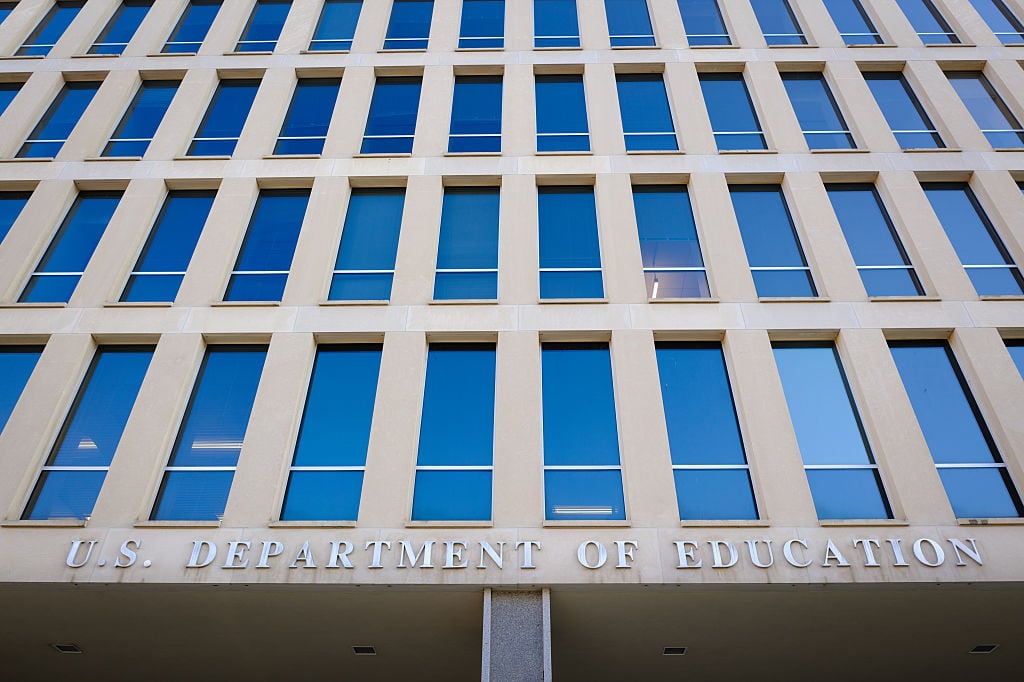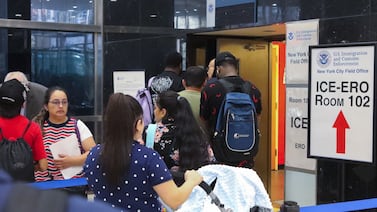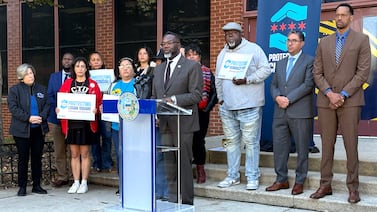Sign up for Chalkbeat’s free weekly newsletter to keep up with how education is changing across the U.S.
WASHINGTON (AP) — A new round of layoffs at the Education Department is depleting an agency that was hit hard in the Trump administration’s previous mass firings, threatening new disruption to the nation’s students and schools in areas from special education to civil rights enforcement and after-school programs.
The Trump administration started laying off 466 Education Department staffers on Friday amid mass firings across the government meant to pressure Democratic lawmakers over the federal shutdown. The layoffs would cut the agency’s workforce by nearly a fifth and leave it reduced by more than half its size when President Donald Trump took office on Jan. 20.
The cuts play into Trump’s broader plan to shut down the Education Department and parcel its operations to other agencies. Over the summer, the department started handing off its adult education and workforce programs to the Department of Labor, and it previously said it was negotiating an agreement to pass its $1.6 trillion student loan portfolio to the Treasury Department.
Department officials have not released details on the layoffs and did not immediately respond to a request for comment. AFGE Local 252, a union that represents more than 2,700 department workers, said information from employees indicates cuts will decimate several offices within the agency.
All workers except a small number of top officials are being fired at the office that implements the Individuals with Disabilities Education Act, a federal law that ensures millions of students with disabilities get support from their schools, the union said. Unknown numbers are being fired at the Office for Civil Rights, which investigates complaints of discrimination at the nation’s schools and universities.
The layoffs would eliminate or heavily deplete teams that oversee the flow of grant funding to schools across the nation, the union said. It hits the office that oversees Title I funding for the country’s low-income schools along with the team that manages 21st Century Community Learning Centers, the primary federal funding source for after-school and summer learning programs.
It will also hit an office that oversees TRIO, a set of programs that help low-income students pursue college, and another that oversees federal funding for Historically Black Colleges and Universities.
In a statement, union president Rachel Gittleman said the new reductions, on top of previous layoffs, will “double down on the harm to K-12 students, students with disabilities, first generation college students, low-income students, teachers and local education boards.”
The Education Department had about 4,100 employees when Trump took office. After the new layoffs, it would be down to fewer than 2,000. Earlier layoffs in March had roughly halved the department, but some employees were hired back after officials decided they had cut too deep.
The new layoffs drew condemnation from a range of education organizations.
The deep cuts “make it impossible to do what’s laid out in federal law,” said Katy Neas, CEO of The Arc of the United States, a disability rights advocacy group. “If you have no people, you can’t monitor states.”
Neas, who served as deputy assistant secretary in the Office of Special Education and Rehabilitative Services during the Biden administration, said that federal employees play an especially valuable role providing consistency and expertise when there is turnover in state and district leadership. Most people want to do right by students with disabilities, she said, but some don’t know what the law requires or allow limited resources to get in the way.
The cuts are more damaging when coupled with cuts to the Office for Civil Rights, she said. Even before the latest round of layoffs, local Arc chapters reported that parents have become more reluctant to file complaints because they believe no one will listen or investigate. More schools are delaying evaluations or steering parents toward plans that provide fewer services, Neas said.
“The Individuals with Disabilities Education Act still stands, and everything kids are entitled to still stands,” Neas said. “It will just be harder to get them.”
Although states design their own competitions to distribute federal funding for 21st Century Community Learning Centers, the small team of federal officials provided guidance and support “that is absolutely essential,” said Jodi Grant, executive director of the Afterschool Alliance.
“Firing that team is shocking, devastating, utterly without any basis, and it threatens to cause lasting harm,” Grant said in a statement.
The government’s latest layoffs are being challenged in court by the American Federation of Government Employees and other national labor unions. Their suit, filed in San Francisco, said the government’s budgeting and personnel offices overstepped their authority by ordering agencies to carry out layoffs in response to the shutdown.
In a court filing, the Trump administration said the executive branch has wide discretion to reduce the federal workforce. It said the unions could not prove they were harmed by the layoffs because employees would not actually be separated for another 30 to 60 days after receiving notice.
Chalkbeat National Editor Erica Meltzer contributed reporting.
The Associated Press’ education coverage receives financial support from multiple private foundations. AP is solely responsible for all content. Find AP’s standards for working with philanthropies, a list of supporters and funded coverage areas at AP.org.






